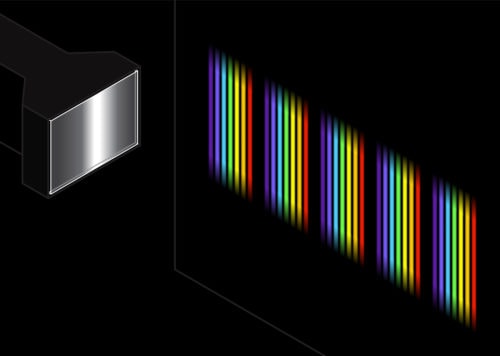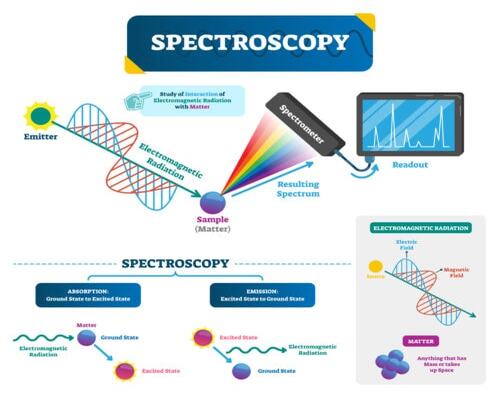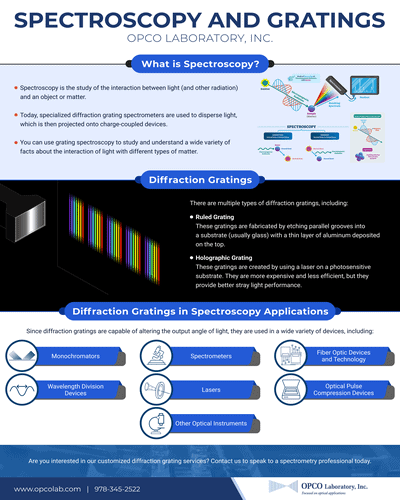When light diffracts, it bends through a slit or opening, which alters its output. As an example, when you shine white light through a prism, you can see it split into many different coloredwavelengths. Spectroscopy is the science of measuring these wavelengths to better understand the object or piece of matter interacting with it. To do this, you use diffraction gratings, which are specialized tools that bend light through openings in specific and measurable ways.
What is Spectroscopy?
Spectroscopy is the study of the interaction between light (and other radiation) and an object or matter. In the
past, light dispersion and absorption were measured using prisms to split wavelengths and photographic plates to capture those emissions. Today, specialized diffraction grating spectrometers are used to disperse light, which is then projected onto charge-coupled devices. Unlike prisms, spectroscope diffraction gratings do not absorb UV light or radiation, and they are more easily customized to fit the specific needs of a project.
You can use grating spectroscopy to study and understand a wide variety of facts about the interaction of light with different types of matter. Since the input and output can be adjusted via the spectrometer grating, you can measure across the immense range of light to detect specific variables.
Diffraction Gratings

- Ruled grating: These gratings are fabricated by etching parallel grooves into a substrate (usually glass) with a thin layer of aluminum deposited on the top. These parallel lines divide light to create a diffraction spectrum of clearly separated wavelengths that are easily measured using devices like spectrometers or monochromators.
- Holographic grating: These gratings are created by using a laser on a photosensitive substrate. These gratings are more expensive and less efficient, but they provide better stray light performance.
Diffraction gratings require specialized equipment and hyper-specialized substrates. Each grating is capable of generating the specific outputs necessary to measure matter in unique ways.
Diffraction Gratings in Spectroscopy Applications
Since diffraction gratings are capable of altering the output angle of light, they are used in a wide variety of devices, including:
- Monochromators
- Spectrometers
- Fiber optic devices and technology
- Optical pulse compression devices
- Lasers
- Wavelength division devices
- Other optical instruments
Industries around the globe utilize these gradients to deliver fiber optic internet, analyze biological samples for scientific purposes, and create consumer-facing products like DVDs.
Diffraction Gratings from OPCO Laboratory, Inc.
Light and radiation help us understand objects around us. The way light is dispersed through an object and diffraction gradient can give important insight in numerous industries, including aerospace, life sciences, defense, and more. Diffraction gradients are critical tools in spectroscopy, and they are a vital and adjustable component of many industries across the globe.
At OPCO Laboratory, Inc., we help companies, non-profits, public agencies, and laboratories across the globe utilize the power of spectrometry. Our state-of-the-art laboratory and industry-leading equipment help us create diffraction gradients for a variety of use cases. We’re an ITAR-registered entity with over 40 years of experience, and we employ a top-notch team of scientists, engineers, and technicians to help you solve your spectrometry challenges.
Are you interested in our customized diffraction grating services? Contact us to speak to a spectrometry professional today.

